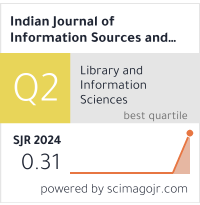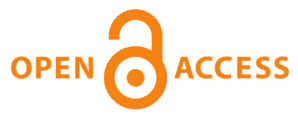Internet Infrastructure and Governing Bodies: An International Perspectives
DOI:
https://doi.org/10.51983/ijiss.2016.6.2.449Keywords:
Internet, Information Infrastructure, Governing Bodies, Internet Bodies, International Organizations,, Information SystemsAbstract
Information Infrastructure is refers to the foundations and associations and concept responsible for the designing and development of information systems. The technologies have played an important role for information infrastructure and related affairs. Among the technologies, internet is most valuable. To control, manage, oversee ‘internet’—there are many foundations and associations working internationally and among these few important are ICANN, Internet Engineering Task Force, Internet Governance Forum, Internet Society, Regional Internet Registry. These organizations have valuable role for the development of the internet and similar systems. This paper is a kind of theoretical review highlighted many aspects of these organizations including their current and future roles. Paper describes the aspects in brief manner with current challenges.
References
DeNardis, L. (2012). Hidden levers of Internet control: An infrastructure-based theory of Internet governance. Information, Communication & Society, 15(5), 720-738.
De Santis, M., De Luca, C., Quattrocchi, T., Visconti, D., Cesari, E., Mappa, I., ... & Caruso, A. (2010). Use of the Internet by women seeking information about potentially teratogenic agents. European Journal of Obstetrics & Gynecology and Reproductive Biology, 151(2), 154-157.
Drissel, D. (2006). Internet governance in a multipolar world: Challenging American hegemony. Cambridge Review of International Affairs, 19(1), 105-120.
Dutta, U., & Das, S. (2016). The digital divide at the margins: Co-designing information solutions to address the needs of indigenous populations of rural India. Communication Design Quarterly Review, 4(1), 36-48.
Dutton, W. H., & Peltu, M. (2007). The emerging Internet governance mosaic: Connecting the pieces. Information Polity, 12(1-2), 63-81.
Gubbi, J., Buyya, R., Marusic, S., & Palaniswami, M. (2013). Internet of Things (IoT): A vision, architectural elements, and future directions. Future Generation Computer Systems, 29(7), 1645-1660.
Johnson, D. R., Crawford, S. P., & Palfrey, J. G. (2004). The accountable net: Peer production of Internet governance. Berkman Center for Internet & Society at Harvard Law School Virginia Journal of Law and Technology, 9(9).
Klein, H. (2002). ICANN and Internet governance: Leveraging technical coordination to realize global public policy. The Information Society, 18(3), 193-207.
Kleinw, W. (2004). Beyond ICANN Vs ITU? How WSIS tries to enter the new territory of Internet governance. Gazette, 66(3-4), 233-251.
Leiner, B. M., Cerf, V. G., Clark, D. D., Kahn, R. E., Kleinrock, L., Lynch, D. C., ... & Wolff, S. (2009). A brief history of the Internet. ACM SIGCOMM Computer Communication Review, 39(5), 22-31.
McLaughlin, L., & Pickard, V. (2005). What is bottom-up about global internet governance?. Global Media and Communication, 1(3), 357-373.
Mueller, M., Mathiason, J., & Klein, H. (2007). The Internet and global governance: Principles and norms for a new regime. Global Governance: A Review of Multilateralism and International Organizations, 13(2), 237-254.
Norris, P. (2001). Digital divide: Civic engagement, information poverty, and the Internet worldwide. *Cambridge University Press.
Paul , P.K., and S K Jena (2012) “Digital Divide to Information Divide: Contemporary Overview” in International Journal of Information and Communication Technology, 5(3/4), 143-147.
Paul, P.K., B. Karn, D. Chatterjee, Poovammal E (2014) “Social Software Engineering as nonprofit technologies: Trends and Future Potentials for Social Informatics and Digital Humanities” International Journal of Social Science, 03(02), 235-242.
Press, L., Foster, W., Wolcott, P., & McHenry, W. (2002). The internet in India and China. First Monday, 7(10).
Raman, B., & Chebrolu, K. (2007). Experiences in using WiFi for rural internet in India. IEEE Communications Magazine, 45(1), 104-110.
Rao, S. S. (2005). Bridging digital divide: Efforts in India. Telematics and Informatics, 22(4), 361-375.
Sampath Kumar, B. T., & Basavaraja, M. T. (2016). Computer access and use: Understanding the expectations of Indian rural students. Quality Assurance in Education, 24(1), 56-69.
Soma, K., Termeer, C. J., & Opdam, P. (2016). Informational governance–A systematic literature review of governance for sustainability in the Information Age. Environmental Science & Policy, 56, 89-99.
Venkatesh, V., Rai, A., Sykes, T. A., & Aljafari, R. (2016). Combating Infant Mortality in Rural India: Evidence from a Field Study of eHealth Kiosk Implementations. MIS Quarterly, 40(2), 353-380.
Weiser, P. J. (2001). Internet Governance, Standard Setting, and Self-Regulation. N. Ky. L. Rev., 28, 822.
Downloads
Published
How to Cite
Issue
Section
License
Copyright (c) 2016 The Research Publication

This work is licensed under a Creative Commons Attribution-NonCommercial-NoDerivatives 4.0 International License.









